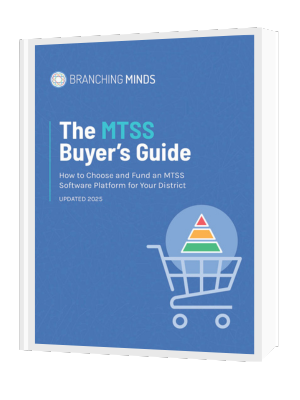Guide
The Multi-Tiered System of Supports (MTSS) Buyer's Guide
Choosing an MTSS platform is more than a tech decision—it’s about finding a system that empowers educators to support students effectively without adding to their workload.
This guide, written from a district leader’s perspective, explains what to look for in a platform, how to align it with strategic goals, and how to fund it sustainably.
Download the guide to:- Understand what features matter most
- Avoid common pitfalls in platform selection
- Make an informed, future-ready decision for your district













